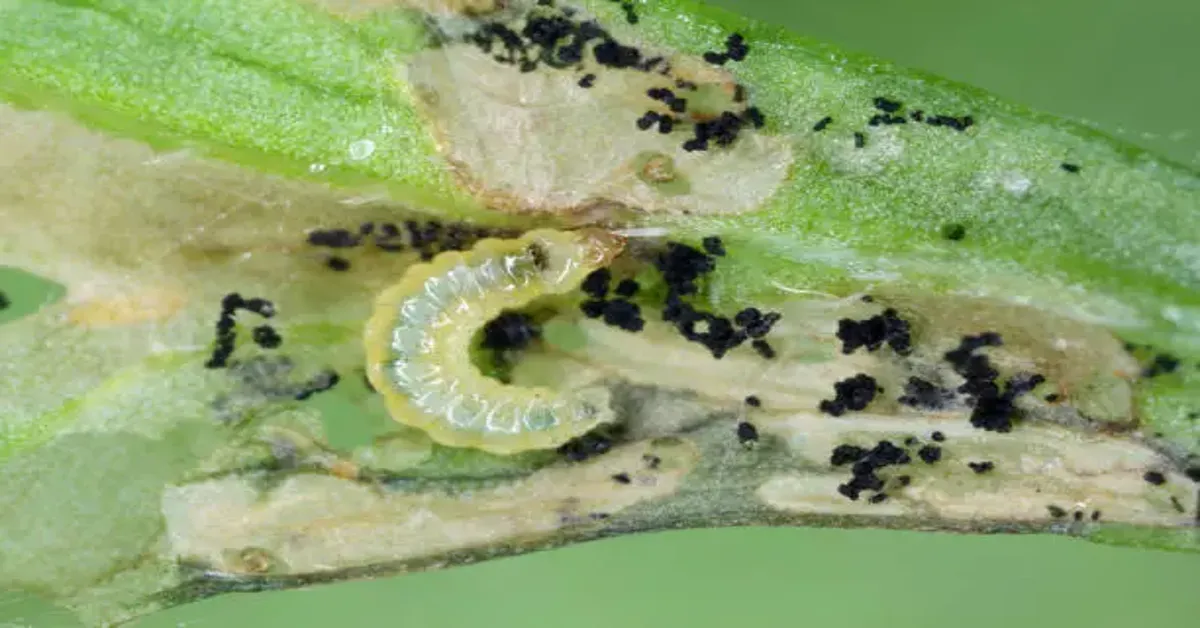A gardener with decades of experience cares for pepper plants in my greenhouse yet has suffered most from battling Beet Armyworms and Fungus Gnat Larvae. The pests cause significant damage but implementation of suitable protection methods allows sustainable plant defense. You will find my tested methods which merge beneficial cultural practices with effective biological solutions such as Bacillus thuringiensis Bt and Bacillus thuringiensis israelensis (Bti) here today for maintaining your greenhouse health.
Understanding the Pests
Beet Armyworm: The Devastating Culprit
The feeding behavior of Beet Armyworms leads them to have a voracious nature. The pepper plant larvae consume leaves along with stems and fruits as they damage the plants sufficiently enough to reduce plant growth while causing major leaf loss. They will endanger your harvest substantially if untreated so you need to detect signals early and implement control methods to protect your healthy crops.
Fungus Gnat Larvae: The Silent Destroyers
The damaging potential of Fungus Gnat Larvae exists even though they possess a small body size. These tiny creatures choose to live in greenhouse humidity where they consume pepper plant roots as their diet. Root damage from these pests reduces plant nutrient absorption causing weakened plants with increased vulnerability to diseases and different pest attacks. Larvae management requires attention because it directly affects the strength of plants and yield production.
Cultural Practices for Effective Control
1. Maintain Cleanliness
A clean greenhouse acts as defense against pests which serves as your key defensive measure against these creatures. A regular removal of plant debris along with fallen leaves from your garden removes the breeding areas and hiding spots for Beet Armyworms and Fungus Gnats.
2. Control Humidity and Watering
The environment that Fungus Gnats prefer includes excessive moisture. The amount of time between waterings should include a period when the soil becomes slightly dry before another application. The population of these pests decreases greatly when you control greenhouse humidity levels along with ventilation systems.
3. Use Sticky Traps
Yellow sticky traps work very well as a chemical-free approach to track Fungus Gnat numbers and decrease their population levels. Vulnerable soil surface areas should serve as locations for putting sticky traps which target adult gnats trying to reproduce.
Embracing Biological Controls: Bacillus thuringiensis Products
A complete pest management plan requires both essential cultural practices together with biological controls as part of the system. The environmentally safe Bacillus thuringiensis (Bt) and bacillus thuringiensis israelensis for fungus gnats biologically based pest control agents function as specific pest killers while protecting helpful insects as well as the environment.
Novobac’s BT Insecticide for Beet Armyworm
The insecticide BT Insecticide from Novobac represents a breakaway solution for managing Beet Armyworm infestations. The bacterium Bacillus thuringiensis occurs naturally in nature because it produces deadly toxins for Beet Armyworm larvae. The pests that consume Bt face digestive system dysfunction which results in their death. The insecticide shows toxicity against pests only thus making it suitable for inclusion in Integrated Pest Management systems.
Novobac delivers Fungus Gnats control through their Bacillus thuringiensis israelensis product.
The Fungus Gnat Larvae population can be successfully managed using Bacillus thuringiensis israelensis from Novobac. The target of Bacillus thuringiensis is fungus gnat larvae after which Bti stops their life cycle while allowing other insects to survive. Application of Bti to the soil allows you to lower gnat numbers thus defending your pepper plants from root injuries.
Expert Insights: Sustainable Agricultural Practices
Dr. Anjali Mehta from the University of Sustainable Farming as a microbial agricultural specialist maintains that biological pest control systems should work alongside traditional cultivation systems. Bacillus thuringiensis products Bt and Bti serve dual functions in pest control while creating better conditions for the entire greenhouse system. The use of biocontrol agents enables farms to reduce their dependency on chemical pesticides thus establishing environmentally friendly agriculture.
Practical Application Tips
Applying BT Insecticide
- Dosage: Follow the instructions on Novobac’s BT Insecticide label for the correct dosage.
- The pesticide should be applied through uniform spraying to plant leaves and fruits which the Beet Armyworms inhabit.
- Apply Novobac BT Insecticide while plants face the sun during early mornings and evenings because these periods optimize potency and reduce helpful insect exposure.
- Applying Bti for Fungus Gnats
- Dosage: Refer to the Bacillus thuringiensis israelensis product label for proper usage rates.
- The mixture requires combining water with it before using it for application near the plant roots of pepper crops.
- Reapplication must happen regularly especially when the weather is moist which creates an environment suitable for fungus gnats.
Success Through Sustainable Practices
I successfully minimized greenhouse pest numbers by using Novobac Bt and Bti products together with these cultural pest management practices. The health condition of my pepper plants has improved while my production levels reached its highest point.
Conclusion: Embrace Sustainable Pest Management
Texts reveal that greenhouse pepper protection against Beet Armyworms and Fungus Gnat Larvae does not need to be viewed as adversarial. You can create a prospering pest-free greenhouse when you combine the proper cultural methods with biological control solutions from Novobac such as Bacillus thuringiensis products. Sustainable agricultural investments now will lead to the natural success of your pepper plant population.

